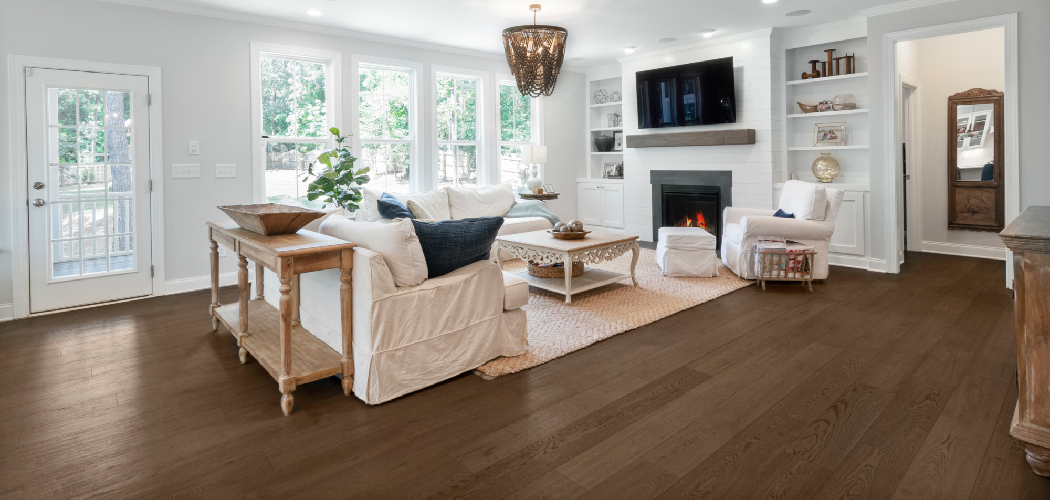Losing your couch to a case of slides can be a frustrating experience. Who would’ve thought such an innocent piece of furniture could become a sliding menace? Whether you’re trying to catch and hold down your couch or looking for ways to prevent its escape attempt, we have some solutions to help end those slipping silkily.
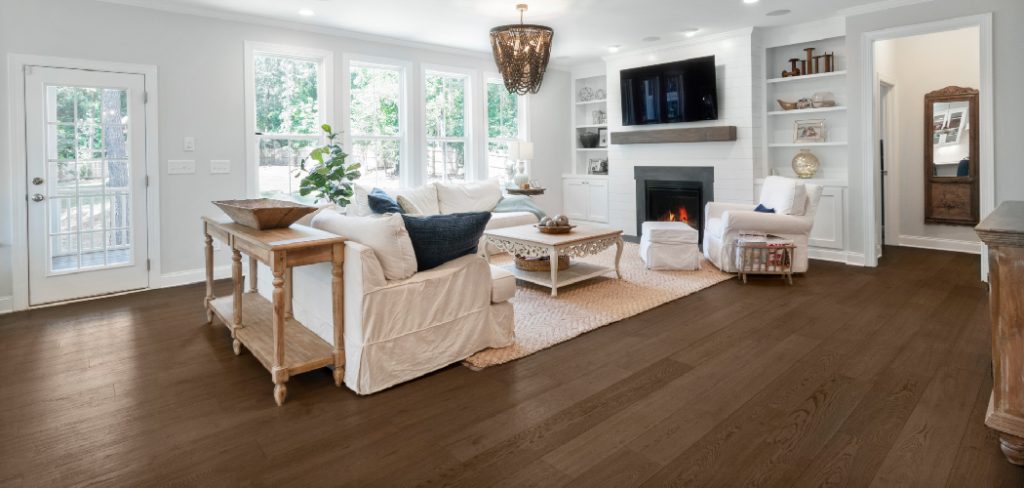
It’s an age-old issue – couches that slide away from where you want them to be. Whether it’s because of rough surfaces or a lack of grip, there are countless reasons why your furniture can end up all over the place. Luckily, whether your couch is sliding on wood floors or another hard surface, you can take some simple steps to keep everything in its proper place.
Read on as we explain how to stop couches from sliding on wood floors and keep them in place!
What Will You Need?
You’ll need a few supplies before you can tackle this sliding problem. Depending on the method you choose, these are the materials you should have on hand:
- Furniture coasters
- Double sided tape
- Nonslip rug pad
- Rubber furniture feet/casters
Once you’ve gathered the needed supplies, it’s time to begin.
10 Easy Steps on How to Stop Couches From Sliding on Wood Floors
Step 1: Furniture Coasters
Furniture coasters are a simple and affordable way to keep your couch from sliding on wood floors. They provide extra grip between the bottom of the furniture and the floor. Look for adhesive furniture coasters that you can stick onto the legs of your couch, or find those with a rubberized base that will provide additional grip to stop it from slipping away.
Step 2: Double Sided Tape
Another great option is to use double sided tape on the legs of your couch. This strong adhesive helps create a secure bond between the furniture and the floor, preventing any movement. When applying the tape, clean both surfaces first, so they’ll stick properly.
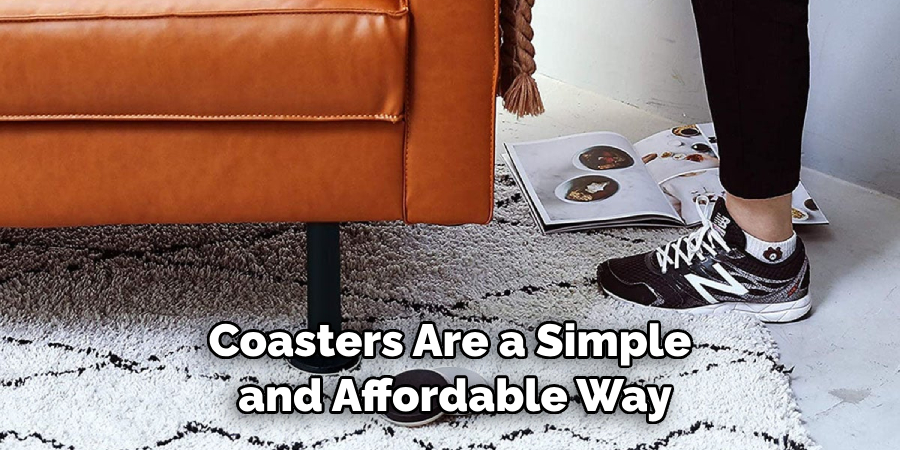
Step 3: Non Slip Rug Pad
If you have a large area rug underneath your couch, you can use a non slip rug pad to keep it in place. This type of material is designed to grip the floor and furniture, so your rug won’t slide around any more than the couch! If your rug has no non-slip backing, consider buying a pad separately.
Step 4: Rubber Furniture Feet/Casters
If all else fails and you’re still having trouble keeping your couch from sliding, you can try adding rubber feet or casters onto the bottom of each leg. These provide extra traction on hard floors and will help keep the furniture in its place. Just make sure they are compatible with the flooring before purchasing them.
Step 5: Use All Three
If you’re really serious about keeping your couch from sliding, why not use all three of these methods? Combining the furniture coasters, double sided tape, and rubber feet will ensure your couch stays put no matter how much it’s used. It ’s a surefire way to make sure your furniture stays where it should.
Step 6: Keep It Clean
Finally, make sure you keep the floors and your furniture clean. This means vacuuming regularly and wiping down surfaces to get rid of dust, dirt, and debris. Both of these can create a slippery surface that can cause your couch to slip out of place.
Step 7: Maintain Regular
Finally, make sure to check on your furniture regularly. This will help you watch for any loose pieces or worn down parts that might be causing the movement. Checking up on your furniture will ensure it stays put and provide extra peace of mind knowing it won’t go sliding away randomly!
Step 8: Check the Floor
Finally, take a look at the flooring under your couch. If it’s uneven or warped, this could be the source of your sliding problem. Consider replacing any damaged boards or addressing the issue with an appropriate solution to make sure your furniture stays safely in place. Be careful not to damage the flooring further in the process.
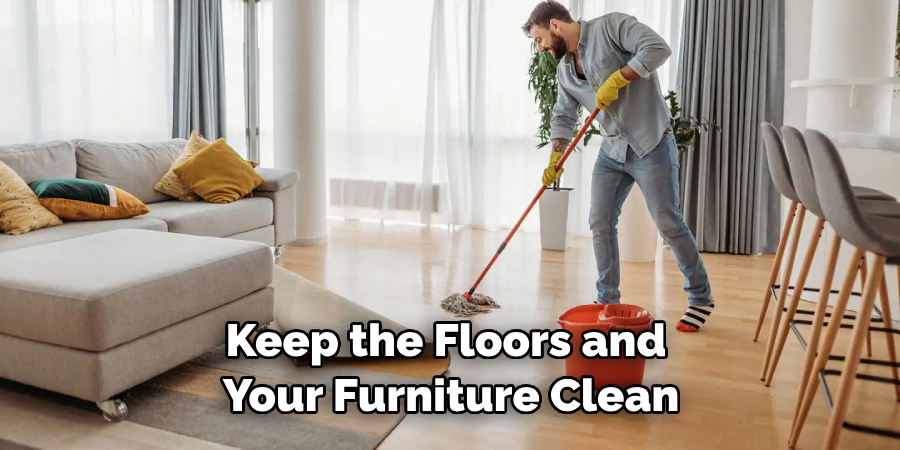
Step 9: Avoid Drastic Moves
Finally, always be aware of your movements when sitting or getting up from the couch. Make sure you’re not pushing it too hard in one direction, as this could cause it to slide out of place. Additionally, avoid dragging it around the room, as this, too, can be a cause of slippage.
Step 10: Enjoy Worry Free Time
With these easy steps, you can now enjoy your time on the couch without having to worry about it slipping away. Keep these tips in mind, and your furniture will be firmly secured to the floor. Remember, prevention is the key to success!
Following these steps, you can easily stop couches sliding on wood floors and keep them securely in place! No more worrying about furniture escaping – with the right supplies and a bit of effort, you’ll have everything safely in its spot once again.
5 Additional Tips and Tricks
1. Place a rug underneath the legs of the couch – this will provide additional grip to prevent sliding.
2. Use furniture pads or sliders on the bottom of the couch legs – this will help provide additional friction and protect your wood floors from any scratches.
3. Place a non-slip mat underneath the couch to keep it in place – this is especially useful if you have a heavier couch that tends to slide more easily.
4. Secure your couch to the floor with screws or bolts – this is an effective way to ensure that your furniture stays put without damaging your wood floors.
5. Vacuum or sweep regularly – dust and dirt can accumulate on wood floors, making them slippery and increasing the chances of your furniture sliding around. Keeping up with regular cleaning will minimize this risk.
Following these tips should help prevent couches from sliding on wood floors and keep your furniture in place without damaging your floors. Regular maintenance and upkeep of the floor is also important to ensure that it remains slip-resistant. If you’re still having trouble, consider getting professional advice from an expert to ensure the best results.
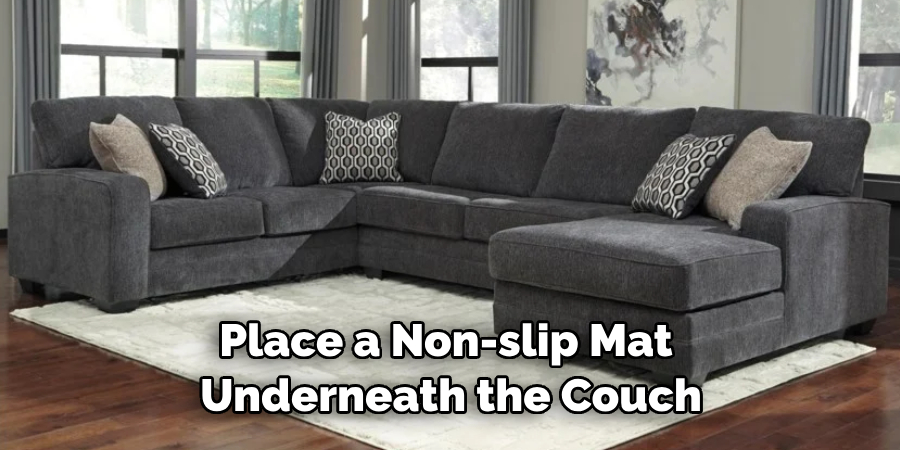
6 Things You Should Avoid
1. Don’t use furniture polish on wood floors – this can make them slippery and increase the chances of your couch sliding.
2. Avoid placing furniture on the carpet – this can create a slippery surface and increase the chances of your furniture sliding.
3. Don’t use rubber or plastic pads on wood floors – these materials often don’t provide enough grip to keep your couch from sliding.
4. Avoid using castor wheels on wood floors – they may cause scratches and won’t provide enough grip to keep your couch in place.
5. Don’t drag the furniture around the room – this will only make it more likely to slip away and could damage both your flooring and couch.
6. Don’t place furniture on uneven surfaces – this increases the chances of the furniture sliding and could cause it to become unbalanced.
By avoiding all of these scenarios, you can ensure that your furniture stays put without damaging your precious wood floors!
Why Do Couches Sit So Low?
There are several reasons why couches may sit low on wood floors. One of the main reasons is that wood is softer than other flooring options, and it can be more susceptible to denting or warping when weight is placed on it. This can cause the couch to sink slightly into the floor, making it appear lower than usual.
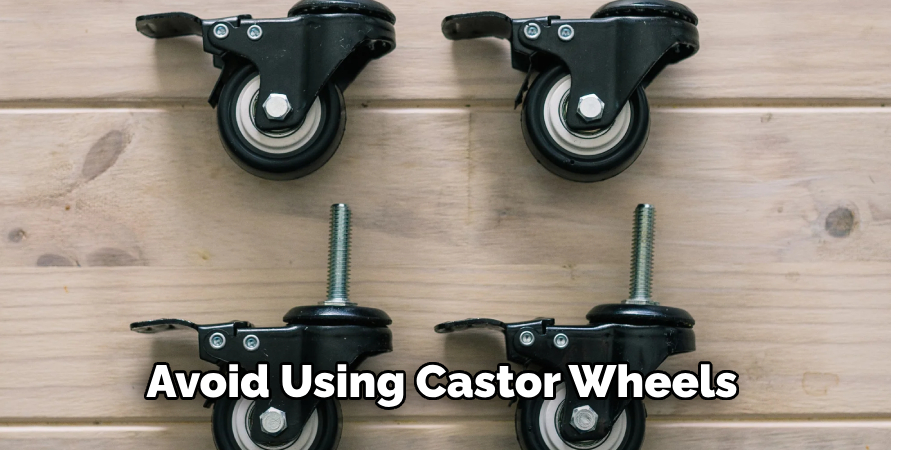
Additionally, if the furniture isn’t evenly distributed across the floor, then one side could sink further down than the other due to its weight distribution. Finally, some furniture may be designed with low legs in order to give them a certain aesthetic look.
No matter the reason for your couch sitting too low, following these tips will help you keep it firmly in place without damaging your wood floors. With the right supplies and a bit of effort, you’ll be able to enjoy your furniture without worrying about it sliding away!
Conclusion
In conclusion, there are many creative solutions to prevent your couch from sliding on a wood floor. Whether you use essential furniture sliders or make a homemade carpet pad, these ideas save the trouble of purchasing several expensive items in stores and can easily be done at home.
Additionally, some of these methods will keep your furniture from sliding and help protect your floors from damage. These solutions are effective and provide homeowners with long-term results too! If your furniture is still shifting after trying out some of these options, it might be time to invest in new floor protectors or consider getting lower friction furniture pieces that will stay still on wooden floors.
Remember, no matter what method you choose to keep your couch in place, it’s important to practice safety first and take the necessary precautions whenever handling heavy objects. Hopefully, the article on how to stop couches from sliding on wood floors has been helpful. With these tips, you can now enjoy your furniture worry-free!
